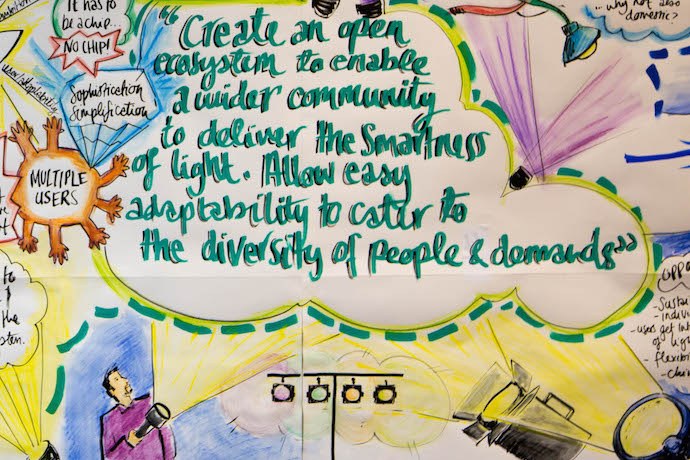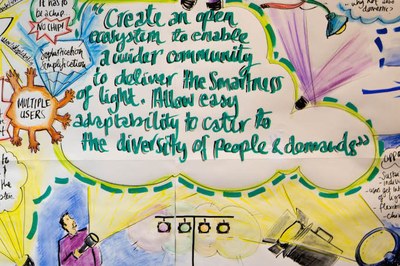OpenAIS Project – Ideation and Roadmapping Workshop
On May 6th and 7th, Johnson Controls invited experts to an ideation and roadmapping workshop in Manchester in the framework of the European Community funded project OpenAIS.
During the first day the vision and mission statement was created and future trends and their impacts on the lighting industry and products were discussed, while the second day emphasized ideation and new idea generation for new lighting system architectures. Johnson Controls presented different roadmapping scenarios forecasting society and technology trends up to the year 2040.
“Create an open ecosystem to enable a wider community to deliver the smartness of light. Allow easy adaptability to cater to the diversity of people & demands”
Mission Statement – OpenAIS Project
About OpenAIS
Following the trends of the creation of the "The Internet of Things" (IoT) and the rapid penetration of SSL based lighting, it is expected that lighting systems will converge to an all-IP based network, with IP (Internet Protocol) reaching the endpoints. OpenAIS aims at setting the leading standard for inclusion of lighting for professional applications in to IoT, with a focus on office lighting. This will enable a transition from the currently existing closed and command oriented lighting control systems to an open and service oriented system architecture. Openness and service orientation will create an eco-system of suppliers of interoperable components and a market for apps that exploit the lighting system to add value beyond the lighting function. Added value can be related to more efficient use of the building, reduction of carbon footprint and increased comfort and wellbeing. In addition, IoT will facilitate smooth and effective interaction of the lighting system with other functions in a building such as HVAC, security and access control. Extensibility and security of the system architecture are important aspects and will be guaranteed. The OpenAIS project will define the requirements and use cases for offices in 2020, define the best open system architecture, identify existing ICT components to be used and develop additional components. The system will be validated by a pilot installation in a real office setting.
After the OpenAIS project, the Consortium will pursue standardization of the system architecture, aiming at the creation of the leading standard for Internet connected lighting. The project brings together a strong collaboration of the leading lighting companies Zumtobel, Tridonic, and Philips and the major players in IoT technology ARM, NXP and Imtech. Consortium partner Johnson Controls represents the end user and academic knowledge on ICT and system architecture is present through TU/e and TNO-ESI. During the project, the Consortium will seek close cooperation with the IoT community.


